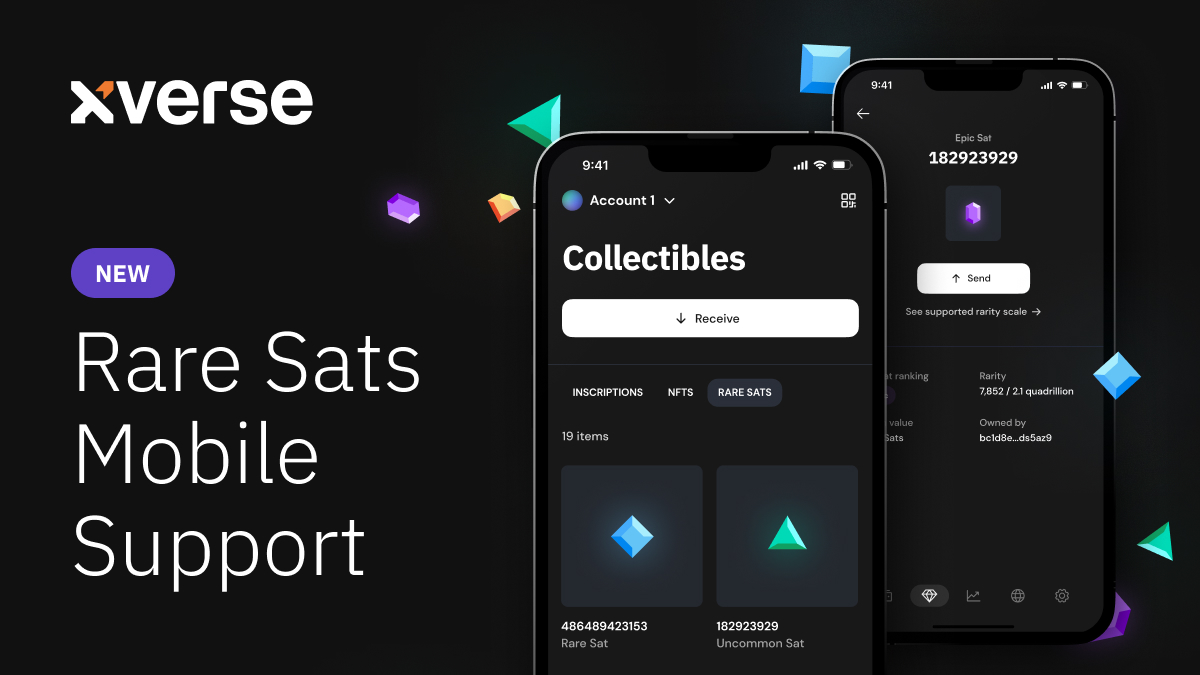One of the most prominent trends within Bitcoin this year has been the concept of “Rare Sats.” Rare sats offer a fresh perspective on the rarity of Bitcoin, an asset which is fundamentally fungible in nature.
As a result, not all satoshis are created equal, and a market for rare sats has emerged. These rare sats encompass various categories, so let’s break them down.
Catagories of Rare sats
The Rodarmor Rarity Index, named after Casey Rodarmor, the creator of Ordinals, categorizes rare sats into six distinct groups:
Common Sats: These are the majority of satoshis and make up about 99% of the entire supply of Bitcoin.
Maximum supply = 2.1 quadrillion.
Uncommon Sats: Uncommon sats are the first satoshis mined in each new block, marking the beginning of a fresh set of transactions.
Maximum supply = 6,929,999.
Rare Sats: The first satoshis created after a difficulty adjustment period, which happens every 2016 blocks (approximately two weeks), fall into this category.
Maximum supply = 3437.
Epic Sats: These are the first satoshis mined within the very first block of a halving epoch, occurring every 210,000 blocks, or roughly every four years.
Maximum supply = 32.
Legendary Sats: Legendary sats are the first satoshis mined after every six halvings.
Maximum supply = 5.
Mythic Sats: The first ever satoshi mined in the network’s genesis block in 2009 holds mythical significance. This satoshi contains an embedded message referencing the 2008 financial crisis and remains locked in Satoshi’s wallet.
Maximum supply = 1.
Black Sats
While not officially part of the Rodarmor Rarity Index, Black Sats have garnered attention from those who consider the last satoshis just as significant as the first. This category, introduced by the founders of CLASSIFIED, presents an inverse rarity index.
You can read more on this via our feature on CLASSIFIED earlier this year, here.
Beyond The Blocks
Outside the linear Rodarmor Index, other rare sats hold value, often associated with significant events in Bitcoin’s history:
Pizza Sats: These commemorate the first Bitcoin transaction for two pizzas by Laszlo Hanyecz in 2010, a significant moment in Bitcoin’s history.
Total supply: 1 trillion.
Palindrome Sats: These satoshis exhibit numerical symmetry, reading the same forwards and backward, appealing to our fascination with patterns.
Current supply: 121 million.
Block 9 Sats: Originating from the first-ever Bitcoin block mined by Satoshi Nakamoto in 2009, they symbolize Bitcoin’s humble beginnings.
Circulating supply: 340 million.
Nakamoto Sats: Sats that were mined by Bitcoin’s creator, Satoshi Nakamoto.
Total supply: 95 billion.
Vintage Sats: These satoshis offer a glimpse into Bitcoin’s early days, created within the first 1000 bitcoin blocks.
Total supply: 1 trillion.
First Transaction Sats: These mark the first recorded use of Bitcoin for peer-to-peer transactions between Satoshi Nakamoto and Hal Finney on January 12, 2009.
Total supply: 1 billion.
How To Hunt For rare Sats
The growing interest in rare sats has led to the rise of “Sat Hunters” who are dedicated to locating and claiming these digital artifacts. While this endeavor was once reserved for those with ample time and technical expertise, you too can now join the hunt too.
To get started, you’ll need a Bitcoin wallet like Xverse, which can display your rare sats according to the Rodarmor Rarity Index, making it easier for you to spot them.
If you want to explore other rare sats, services like Magisat allow you to paste your Bitcoin address to assess the rarity of your satoshis held in your wallet. Many sat hunters also utilize exchanges to find rare sats, sending BTC back to the exchange in case their hunt proves unsuccessful. However, be cautious of using this method, as it’s been known to falsely raise red flags with the CEXs who have subsequently restricted access to the users accounts.
Hopefully this guide has helped you determine which sats you believe hold the most significance. Happy hunting!
Opinions expressed here are opinions of the Author. Influencive does not endorse or review brands mentioned; does not and cannot investigate relationships with brands, products, and people mentioned and is up to the Author to disclose. Accounts and articles may be professional fee-based.



